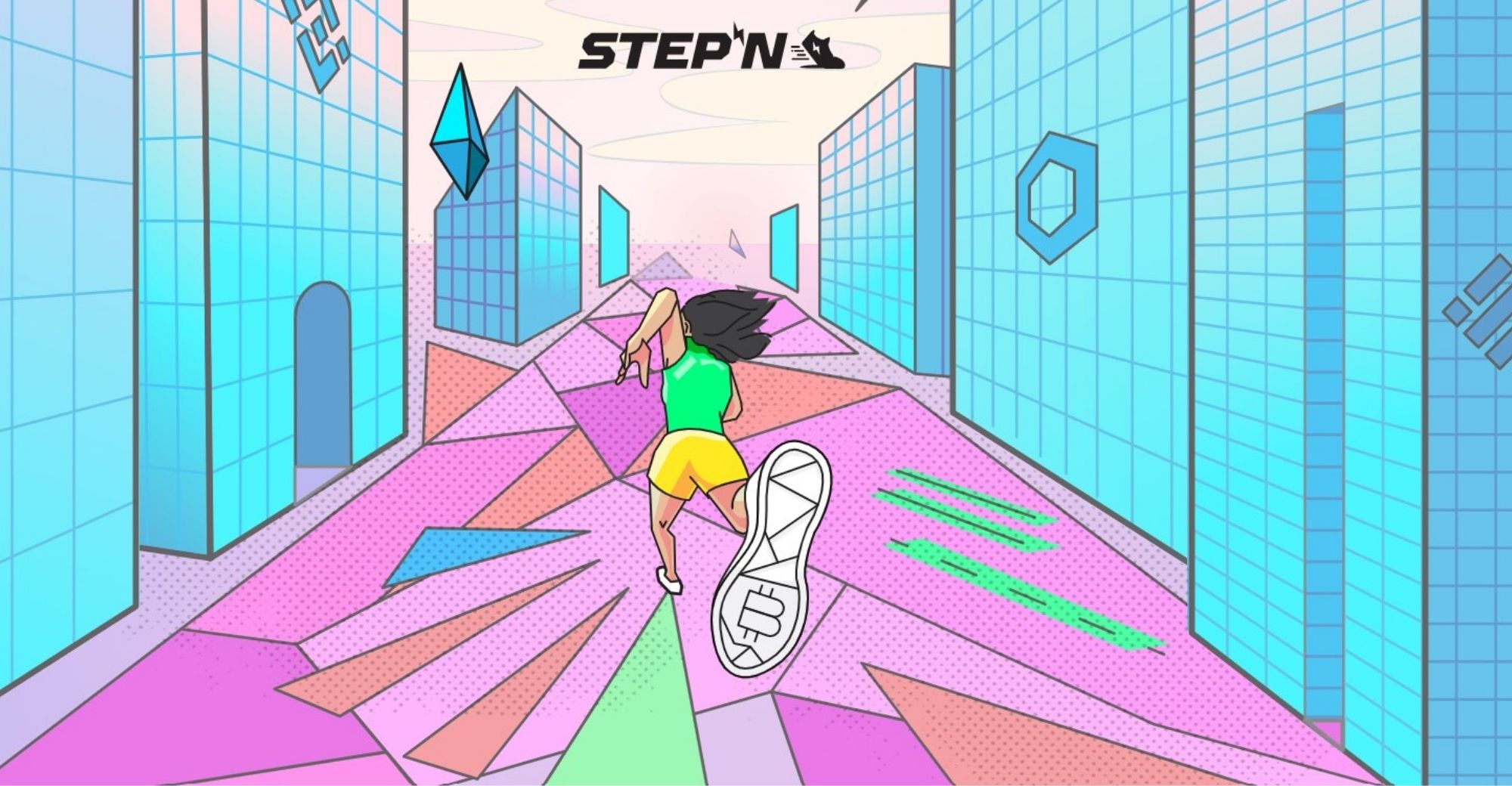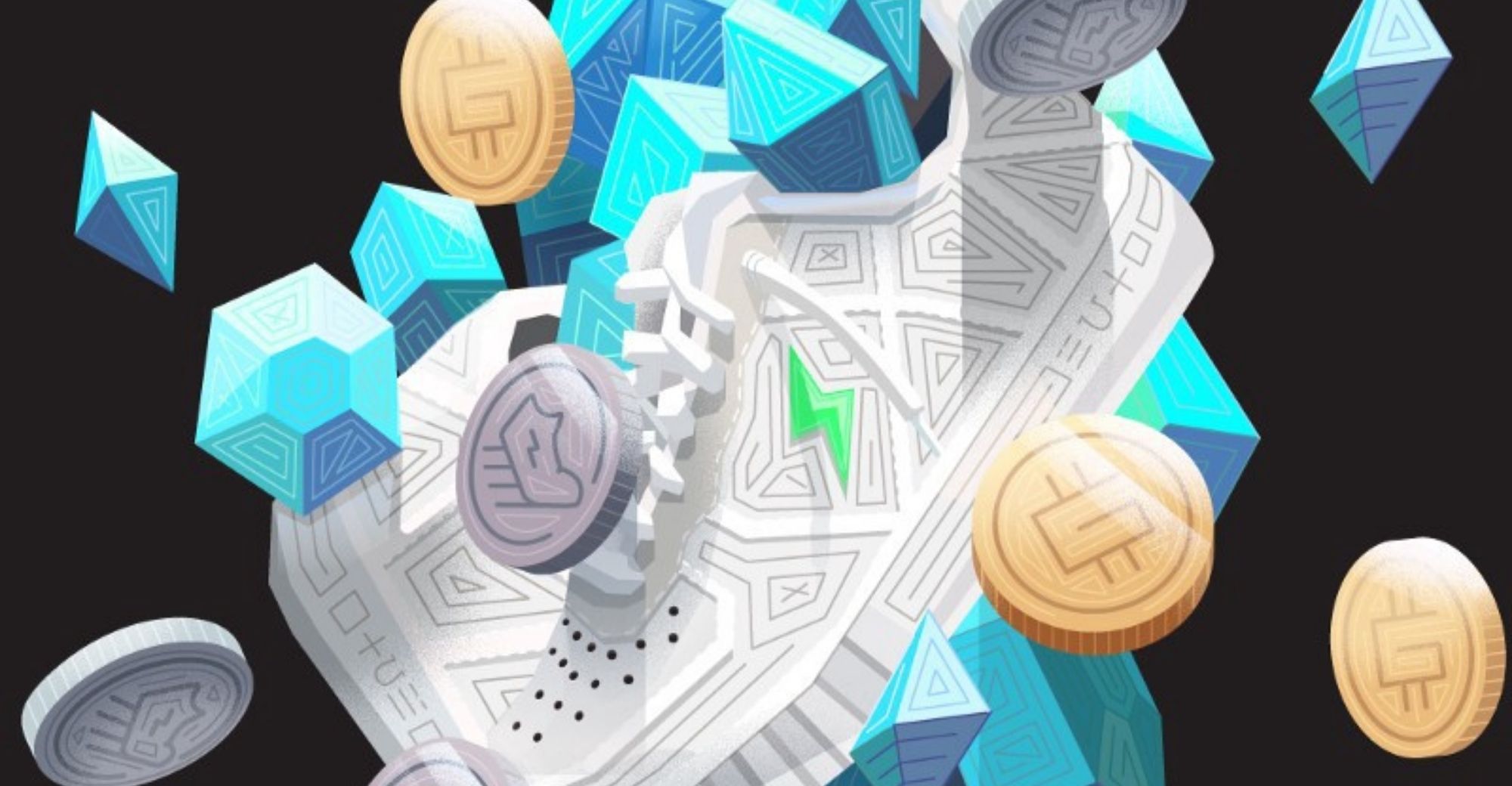STEPN: Stable Tokenomics is the Key
If I had to pick the hottest Web3 project these days, STEPN is the one. Basically, STEPN is a Web3 app that allows people to earn virtual money through walking, jogging, or running outside. In short, it is a “move-to-earn” system.
How does it work?
STEPN is an invite-only game. One person can earn one Activation Code for every 10 “Energy” units spent (I will introduce what Energy is later), and each user can only hold one activation code at a time, until it is used. The invite-only setting brings a barrier for people to join the game and naturally promotes the needs of “community”. I first joined a STEPN-related group chat because I was trying to get an activation code for my friend. Community is the core of a Web3 project, because community generates consensus, and consensus generates the value of the coins. The team does not guarantee the invite-only system will be permanent, but I guess at least in the currently rapid growth stage, the team will maintain a scarcity of qualifications needed to join the game.
After signing up successfully, users need to purchase NFTs in the form of virtual Sneakers to earn Energy. The amount of Energy increases when you have more Sneakers, but not linearly. By design, you will receive two Energy if you have one pair, four for three pairs, nine for nine pairs, 12 for 15 pairs, and 20 for 30 pairs. This is the first “wow!” design in my eyes. One Energy equals five minutes, and you can only earn its game token GSTs while you have Energy left. Connecting the amount of Sneakers users purchased with Energy stabilizes the tokenomics. The non-linear design pushes users to buy more Sneakers to lengthen the time they can earn, and since more Sneakers means a higher cost to spend, community users also have a higher incentive to keep the price of GSTs stable at a high level.
Since new users have to start with a Sneaker to earn tokens, the price of a Sneaker has been increasing constantly. I signed up on March 25, when the floor price was around 8 SOL. I decided to hold for a moment. It might be one of the worst decisions I have ever made, because when I finally decided to join the game last week, the floor price had reached around 10 SOL.
There are multiple ways to categorize Sneakers. The simplest one is based on their optimal speeds to earn GSTs – walker, jogger, runner, and trainer. Among those four, trainer is a special one since it has no speed restrictions. By name, runner has the highest requirement for user’s speed, i.e. 6km-10km per hour, and its price is comparatively lower, but its efficiency to earn GSTs is the highest. Among all four types, trainer costs the highest, unsurprisingly.
Another categorization is based on rareness and quality. There are five levels. A higher level means a higher price and also higher scores on attributes that will directly impact a user’s earnings. The four attributes are:
- Efficiency: decide how many GSTs you can earn from your run
- Lucky: determine the frequency and quality of a Mystery Box drop
- Comfort: this function is still under development, but might be related to the minting of GMT, the governance token on STEPN
- Resilience: affect the decay rate of Durability. In short, users need to pay GSTs to “repair” their Sneakers after running for a certain time, and resilience decides how much you need to pay to recover your Sneakers’ durability
One more point regarding Sneakers that is worth noting is their level. Each pair has a base value for each attribute at level 0, and each time the user levels up the Sneaker, users will be allowed to distribute certain numbers across attributes based on their needs. The level-up process costs GSTs.
When you complete your purchase of Sneakers, you are now ready to run and earn. The amount of GSTs you earn depends on multiple considerations: the efficiency attribute, the GPS signal, speed, and luck. There will be a cap of GSTs a user can earn per day and the cap is decided by the highest level among all your Sneaker collections.
Similar to other NFTs, STEPN allows shoe-minting. Users can mint a new Sneaker from two existing shoes in their possession. Each pair can be minted seven times at most, and the mint fee will be higher with a higher mint count. What’s interesting here is that it is similar to a “blind box” – the same combination of shoe qualities and types might result in a different mint result, which makes the whole process more fun.
In STEPN’s white paper, besides solo running, many other modes are still under development, including a marathon mode for people who want to race and a background mode for people who can earn via their step count from their mobile device’s Health Data app. The social-related features are still under development. The Sneaker rental system is planned to be available this summer for users who are holding a pair of shoes over level 10, which might lower the entry barrier successfully.
Tokenomics
I can tell how much effort STEPN has put into the token system design. Axie Infinity, as the former king of GameFi, has been trapped in inflation recently. A stable tokenomics system is the foundation of a constantly developing GameFi project.
Similar to Axie Infinity, STEPN is adopting a dual token system: the game token GST and the governance token GMT. GMT has a limited supply capped at 6,000,000,000, and 30% of the total supply will be rewarded to users through move-to-earn and governance participation. Its token system borrows from successful mechanisms of Bitcoin, including “halving” and “difficulty bomb,” to keep the supply sustainable and the return proportional to the difficulty.
Compared to GMT, GST is a much more widely used, traded, and liquidated token at STEPN. By design, GMT cannot be minted by users without reaching level 30 or having three Energy. However, GST can be earned from the first minute of your run. While you are earning GST, you are also spending GSTs all the time – to level up your shoes, to repair your shoes, to open a mystery box, and so on. The high-frequent usage of GST keeps the built-in financial system active and maintains the value of coins effectively. The price of GST has been rising from $0.1 to $4.7.
Why STEPN Stands Out Among Web3 Fitness Apps
There are many reasons that explain STEPN’s success, at least so far.
Firstly, STEPN has created a convincing anti-cheating system. No matter whether you keep your phone on your dog, or try cycling instead of running, STEPN can capture your cheating behavior and take back your earned GSTs or even freeze your account. Additionally, to avoid people opening two accounts but only purchasing one Sneaker to switch between them, STEPN has designed a cool-down period. During the cool-down period, users cannot use this Sneaker.
Secondly, it is a beginner-friendly hands-on experience for people to transition from Web2 to Web3. The to-earn model was first introduced by video games. Gaming is not for everyone, but walking or running is much broader, which brings STEPN a huge audience pool. Also, STEPN focuses on mobile devices, which most people use to get online every day. Additionally, STEPN attempts to soften the barrier for people to use Web3-specific features. Its built-in wallet enables people to deposit crypto from centralized exchanges directly without Googling “how I can open a crypto account.”
Definitely, the STEPN community plays a huge role in promoting the app. Both Discord and WeChat groups are very active and friendly. Beginners can find guides everywhere online. Many people even help their parents purchase Sneakers and join the game. Their parents do not need to know what blockchain is, but just need to click start on the app, exercise as usual, and earn.
I have been using STEPN for almost one week. It does motivate me to run more successfully and the whole user experience design is pretty smooth for me. As long as its tokenomics keeps stable, I am very optimistic about STEPN’s future. Web3 fitness projects have become a trend those days. BikeRush, a ride-to-earn project, has closed a second $6.5 million funding round. Move-to-earn might lead a new wave to push Web3 to a broader audience.
Potential Risk
Currently, since its user size has been growing rapidly and steadily, the risk of inflation has not been an emergent worry yet. However, when user growth stagnates, the real challenge will arrive. Based on the current design, one single Sneaker can bring infinite revenue return to its possessor. When the user pool is not expanding further and market liquidity drops sharply, the infinite return might destroy the financial setting disastrously, which is what is happening with Axie Infinity.






